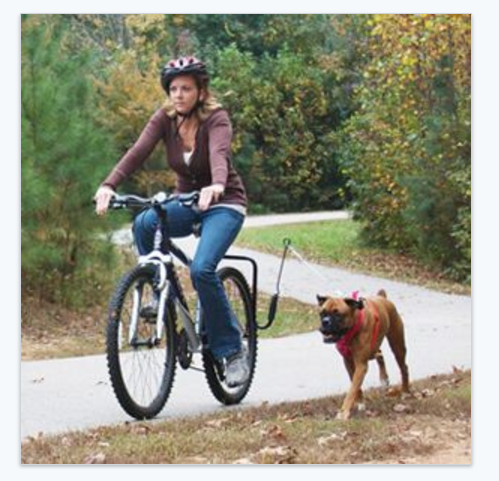Biking with your dog can be a great way to exercise those high-energy pups that can outrun you (either speed or distance). It can also be dangerous for both of you if not done properly.
Most importantly, be sure to use a bike attachment such as the Springer or WalkyDog, do not just jump on a bike with your dog’s leash in your hand. Then, follow these tips to getting your dog used to running next to your bike.
#1 – Bike conditioning
Start by assessing your dog’s opinion of a bike in general. If you have a puppy that you are planning on running when he is older, get him used to bikes at a young age by taking him out to places where people ride, feeding him next your bike, and even walking him next to a bike for a few steps. This is especially important with dogs that want to chase moving objects.

#2 – Never force your dog
Don’t assume your dog will “just get over” any reservations they have about the bike if you make him run next to it. Take things slow and get him comfortable with the bike first. If your dog is afraid of bikes, you will have to do some counter conditioning before you even think about having him run next to it.

#3 – Start with walking
When you first attach your dog to the bike using a harness (never a collar for safety reasons!), walk your bike with the dog attached. This is to get your dog used to the bike in a safe way.
Reward your dog with treats and/or praise for walking nicely next to the bike. You can also start by just walking him on leash next to the bike if he is a little unsure. If your dog tries to bolt or shows other signs of fear, stop and see tip #2.

#4 – Have a helper
When it’s time for you to get on your bike and start riding, don’t do it alone. It helps to have someone else there in case something happens. At a training facility I worked at, we would have someone follow behind in a car with lights flashing to slow down traffic. That also helps the dog get used to cars around them in a controlled fashion.
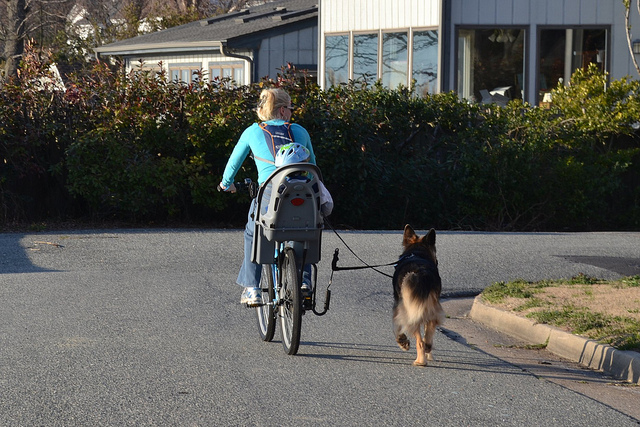
#5 – Pick quiet places at first
This is especially important with dogs that are reactive or nervous in new environments. Pick quiet hours and places to bike, so they will be less likely to see something that will make them stop concentrating on their job of running nicely next to the bike.
(We found that biking really helped give these reactive or nervous dogs something to focus on and many were much better behaved biking than walking or running. Still, use caution when biking with these types of dogs!)
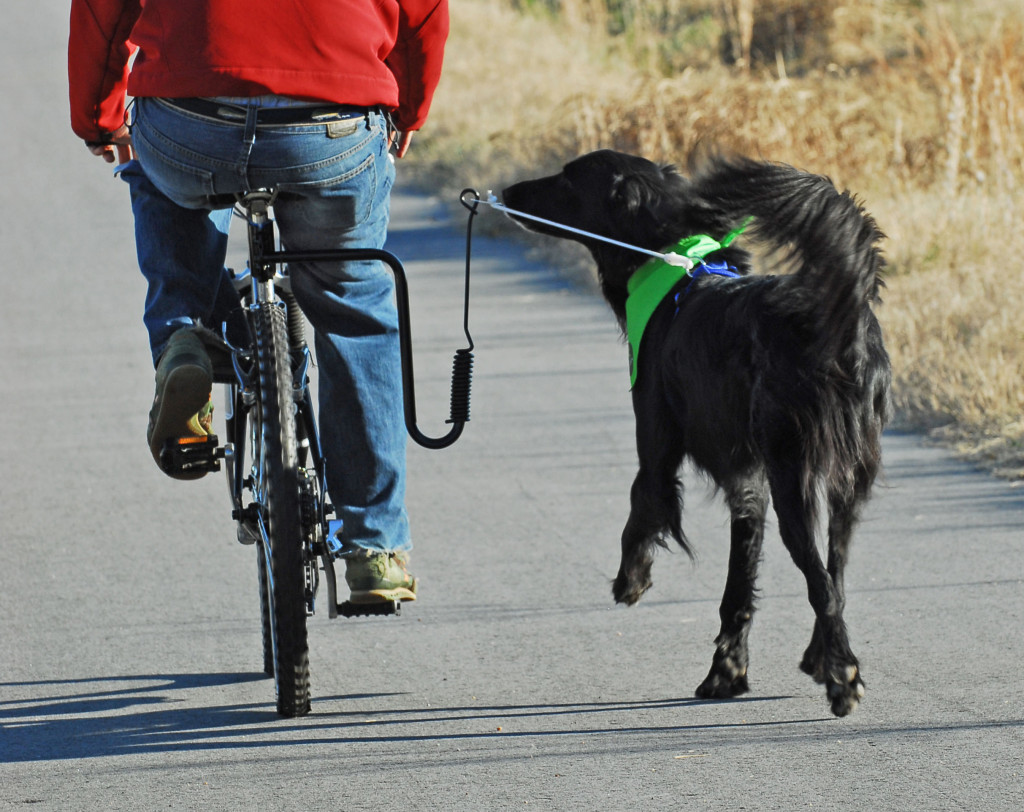
#6 – Slow down/speed up cues
If you compete in performance events such as Rally, your dog may already have a speed up and slow down cue. For example, I use “Hurry” and “Easy.” Teaching your dog “speed cues” can help when you are biking so that you can adjust their speed if necessary.
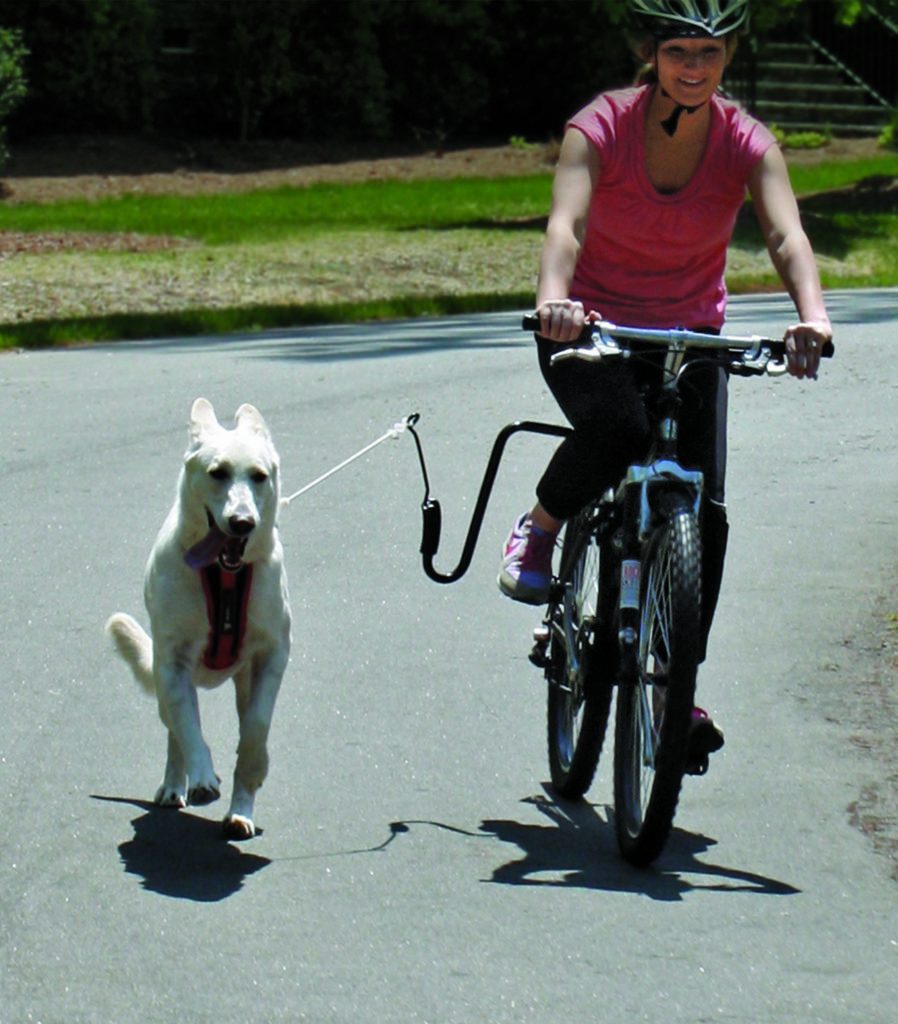
#7 – Help them by adjusting your speed
It’s important to watch your dog and be aware of how many steps they have to take when you are riding your bike, especially on turns. Often, you may have to slow down or speed up to make sure that your dog is not being dragged or is not dragging you. Paying attention and adjusting your own speed can help them get used to the bike.
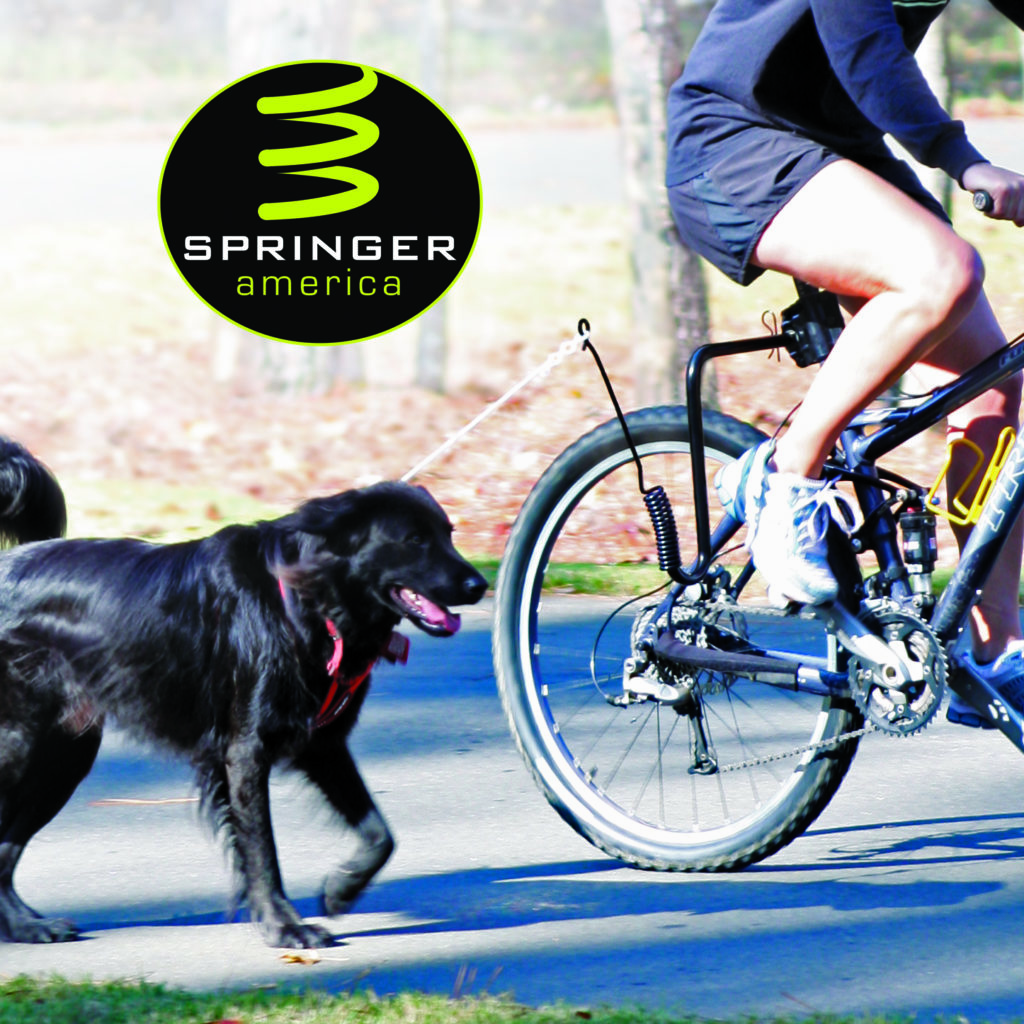
#8 – Turn Cues
Another set of cues that can be helpful when biking are turn cues. Teaching your dog “left” and “right” can help make sure that your dog doesn’t go one way when you want to go another way – think what would happen if you wanted to turn to the side your dog is on and your dog does not notice….yikes!
These are easy cues to teach and can be really helpful when getting your dog used to running next to a bike.
